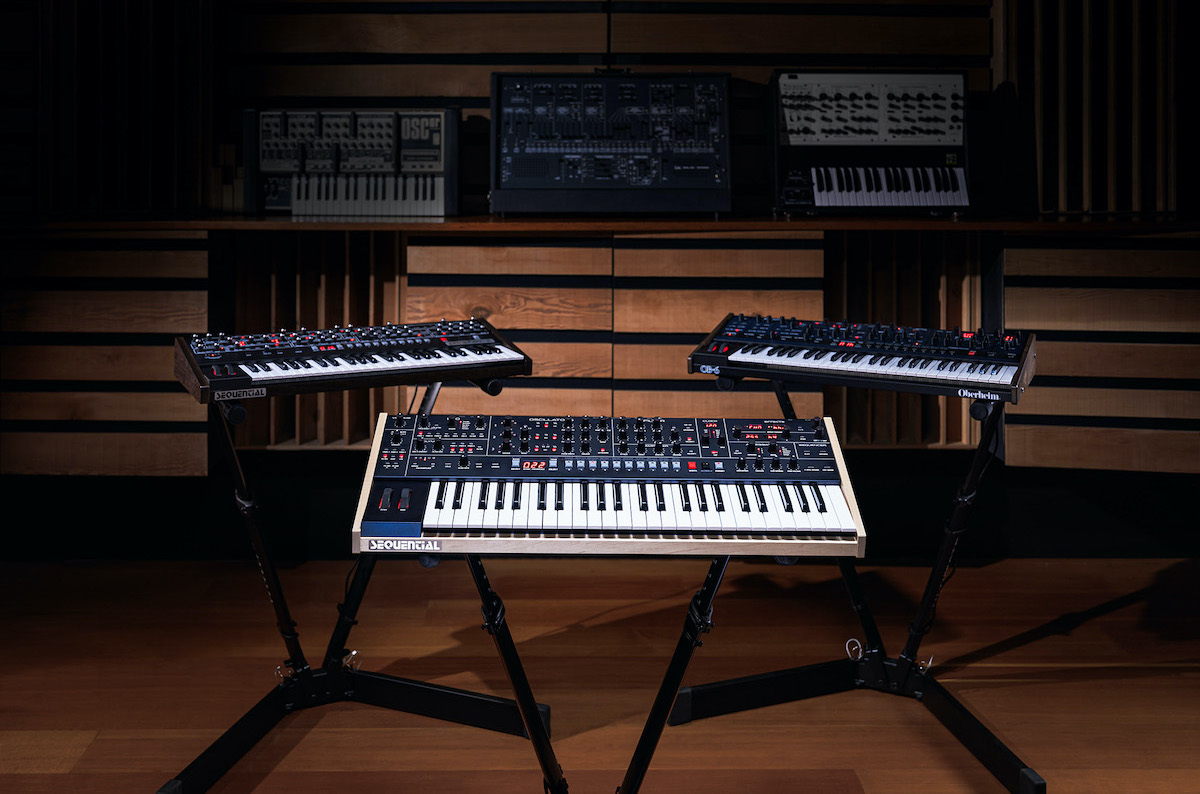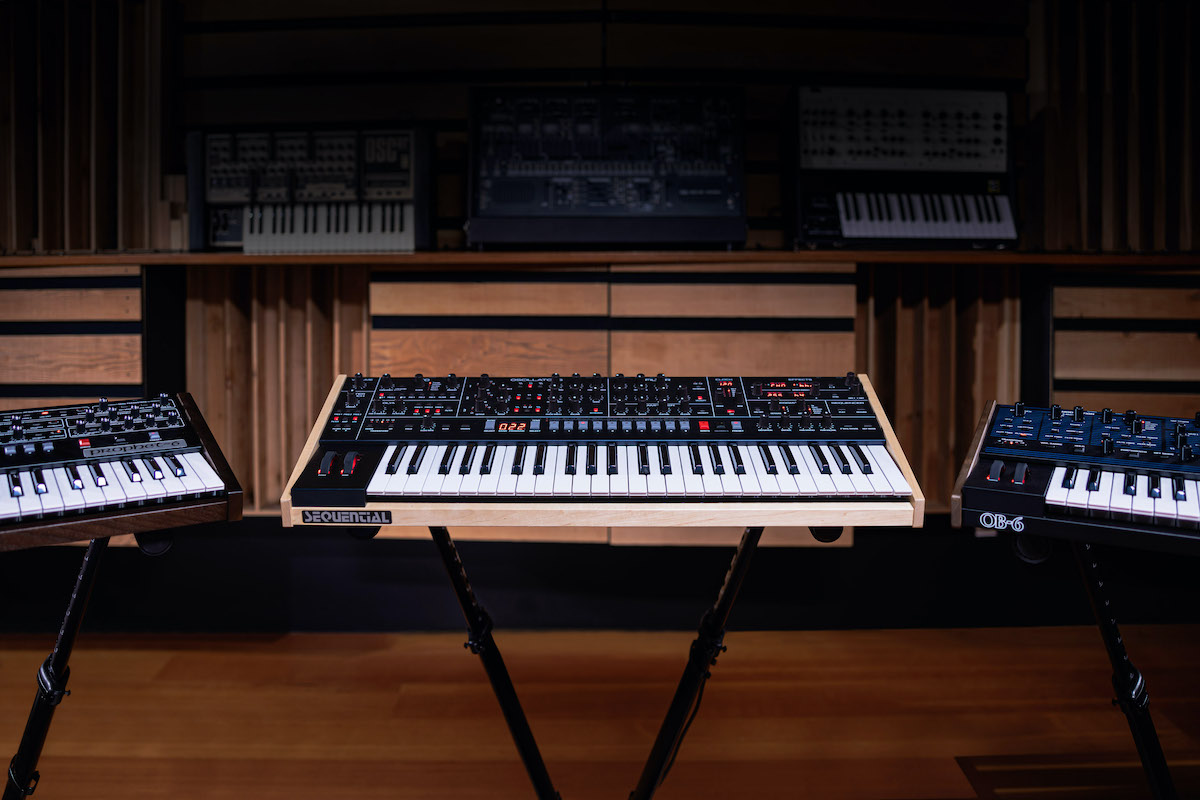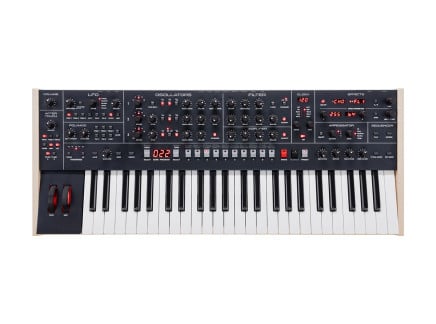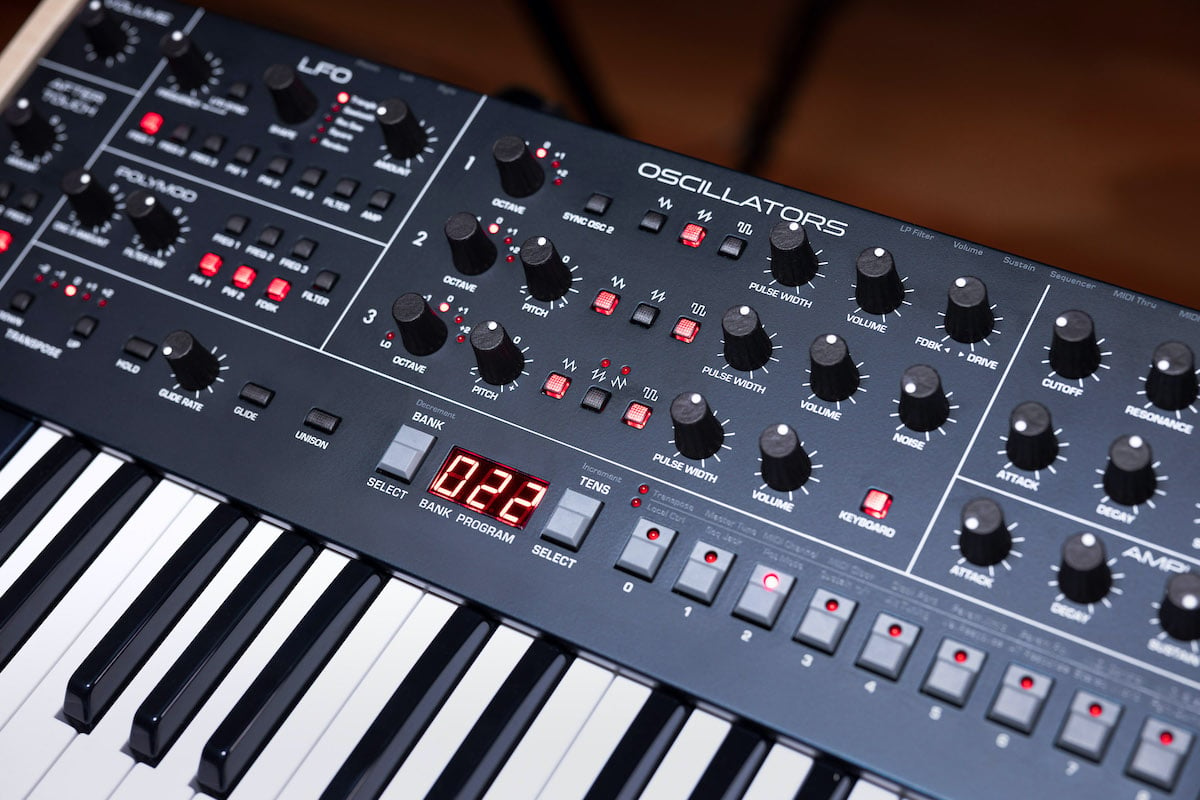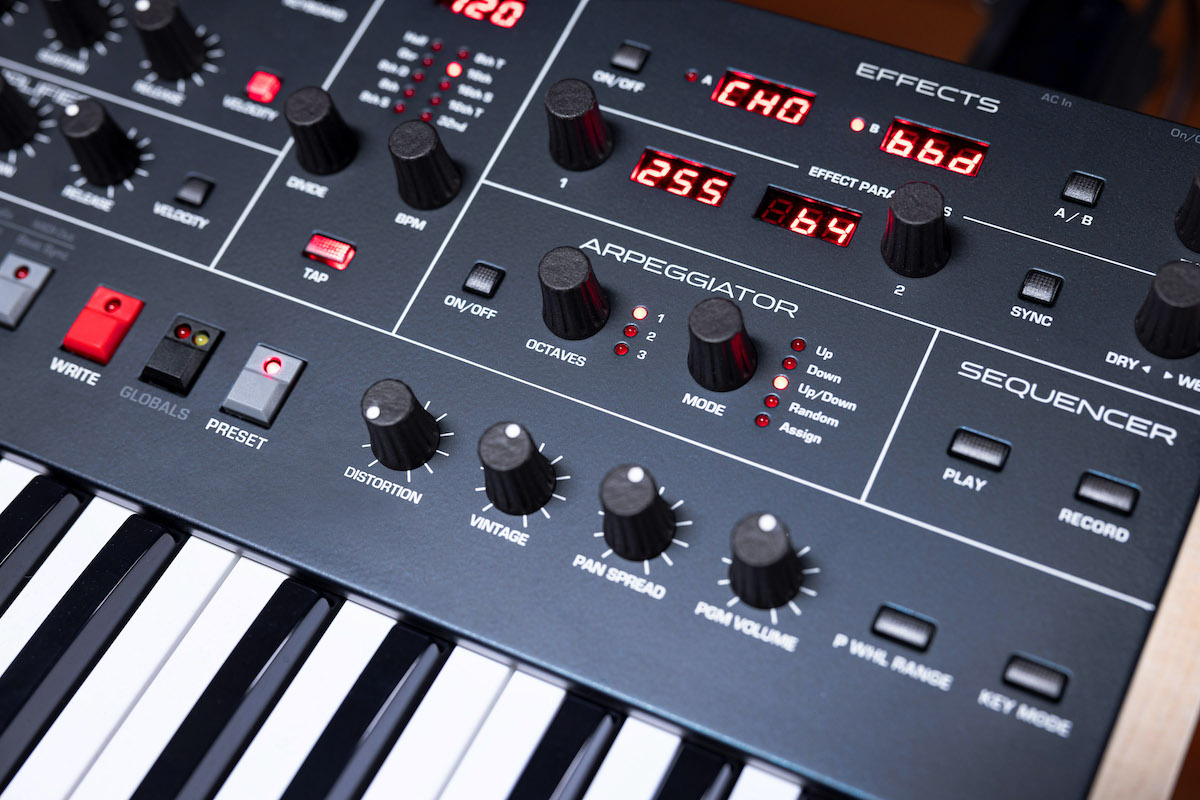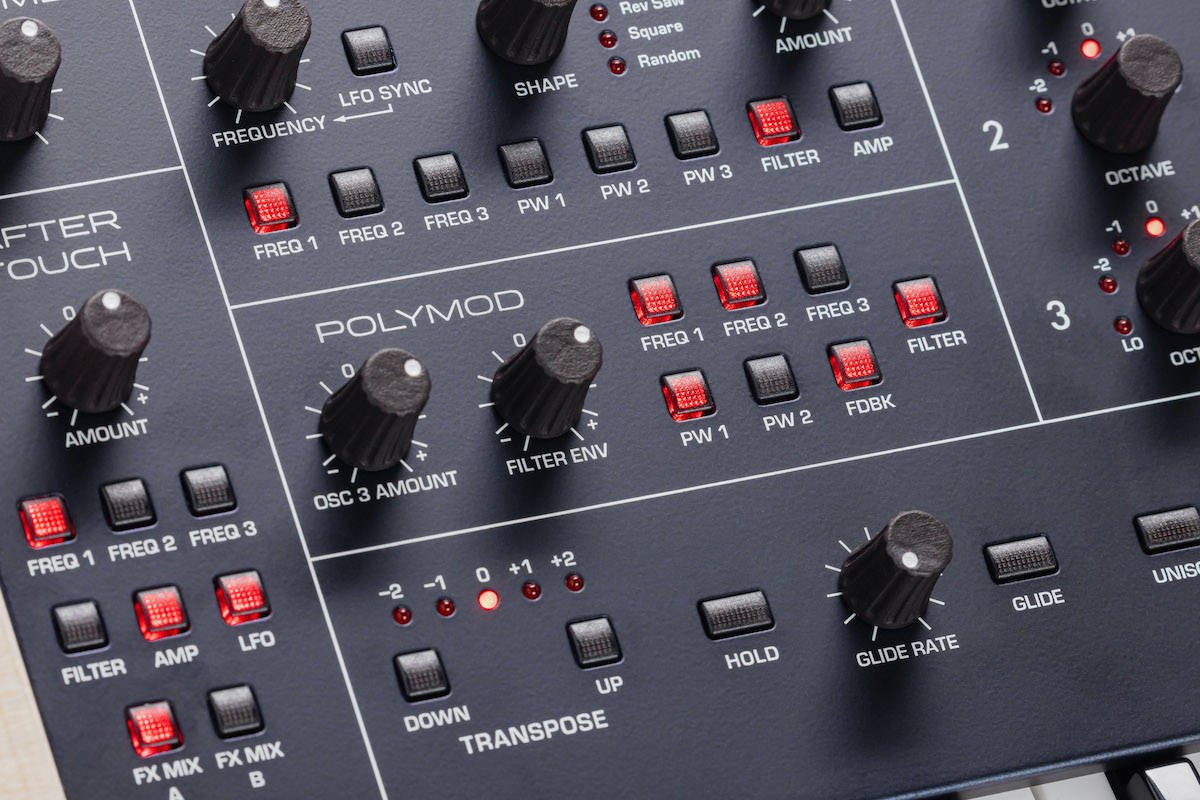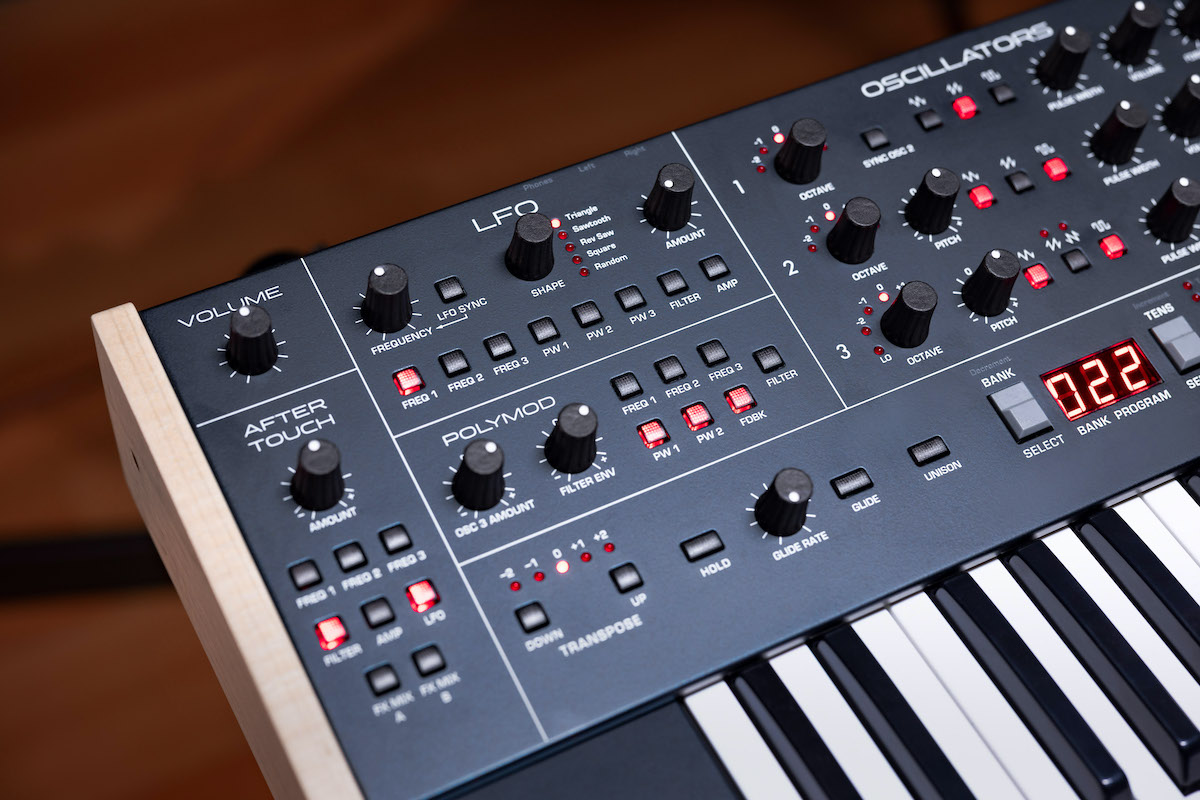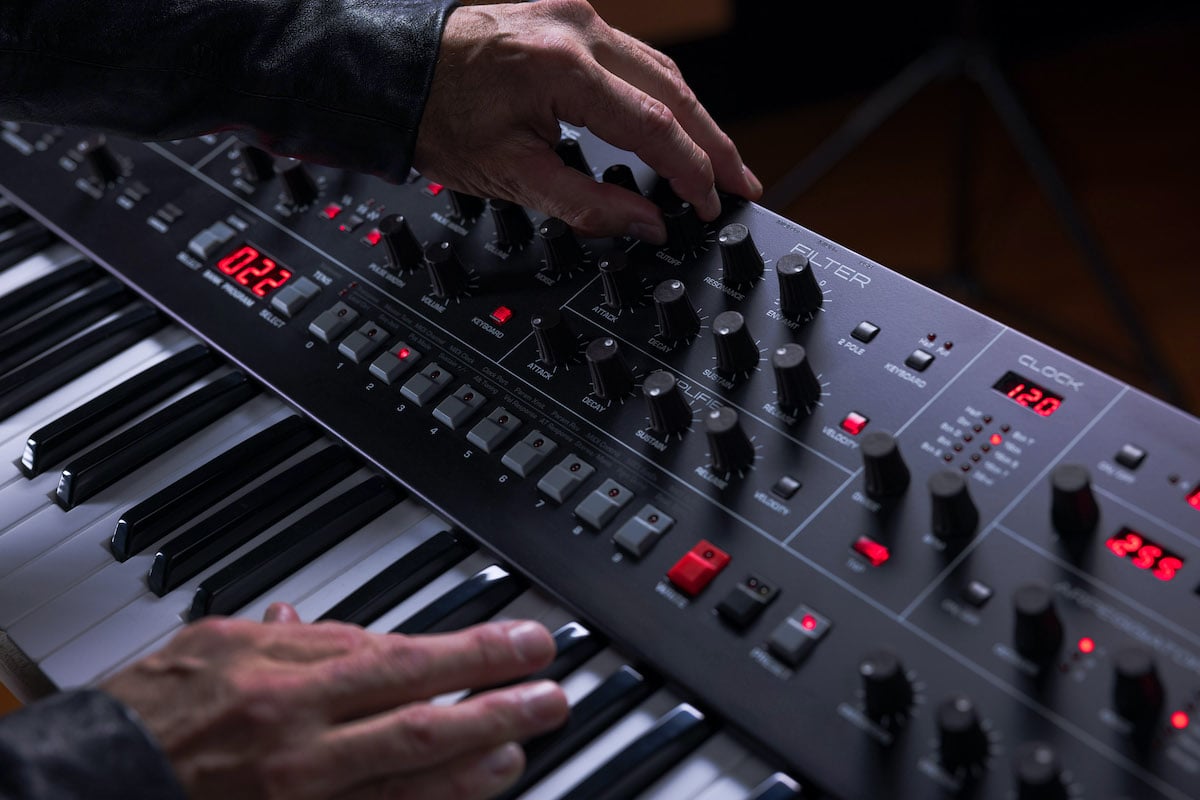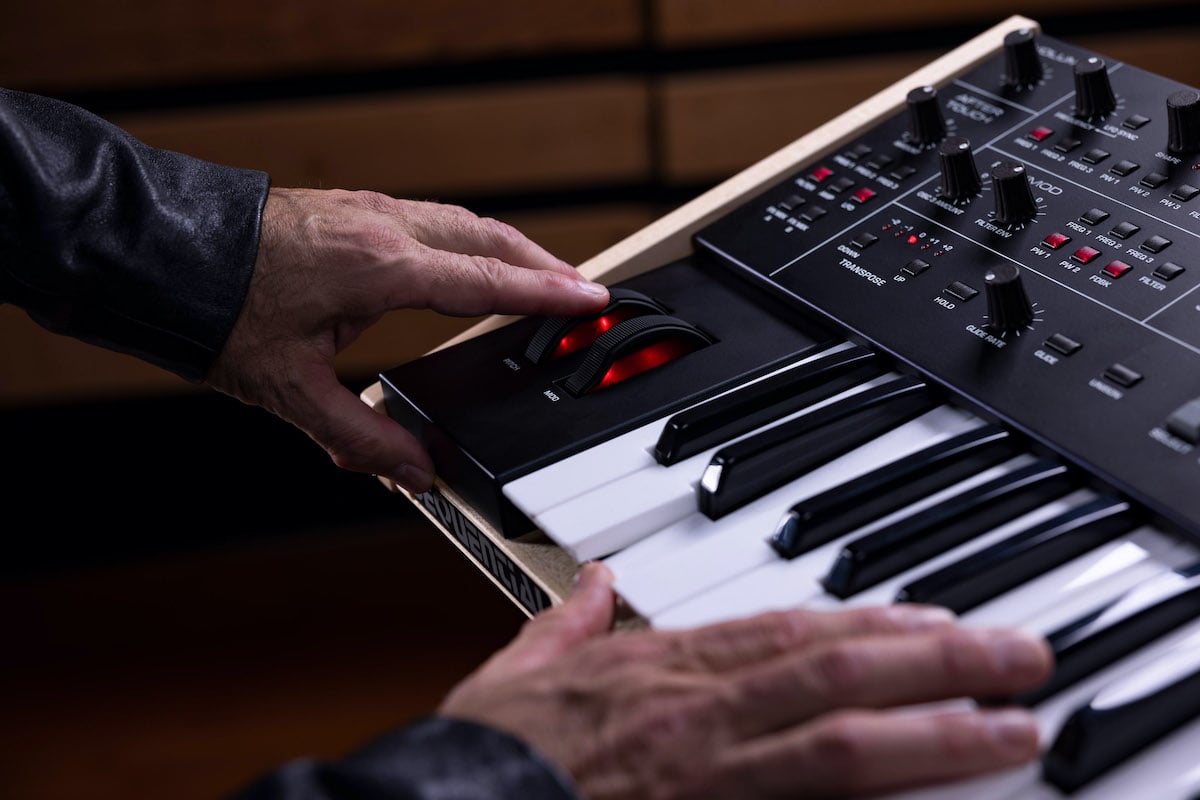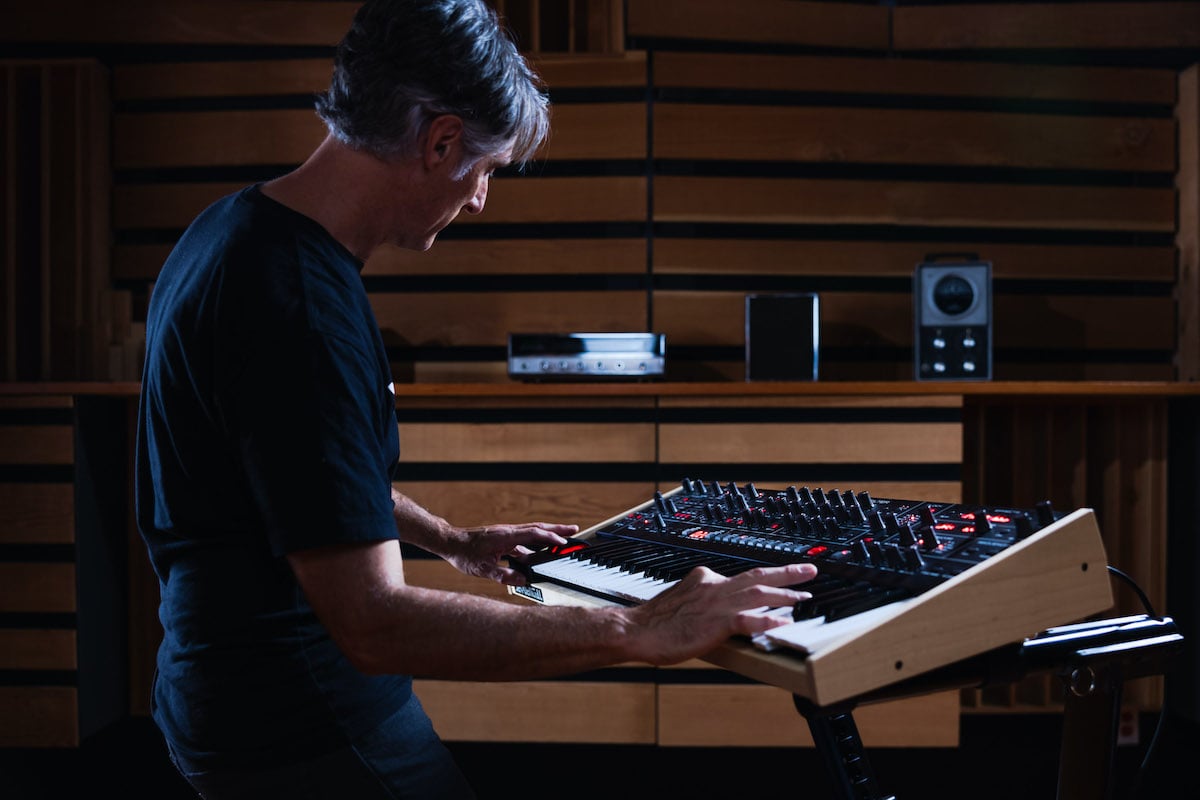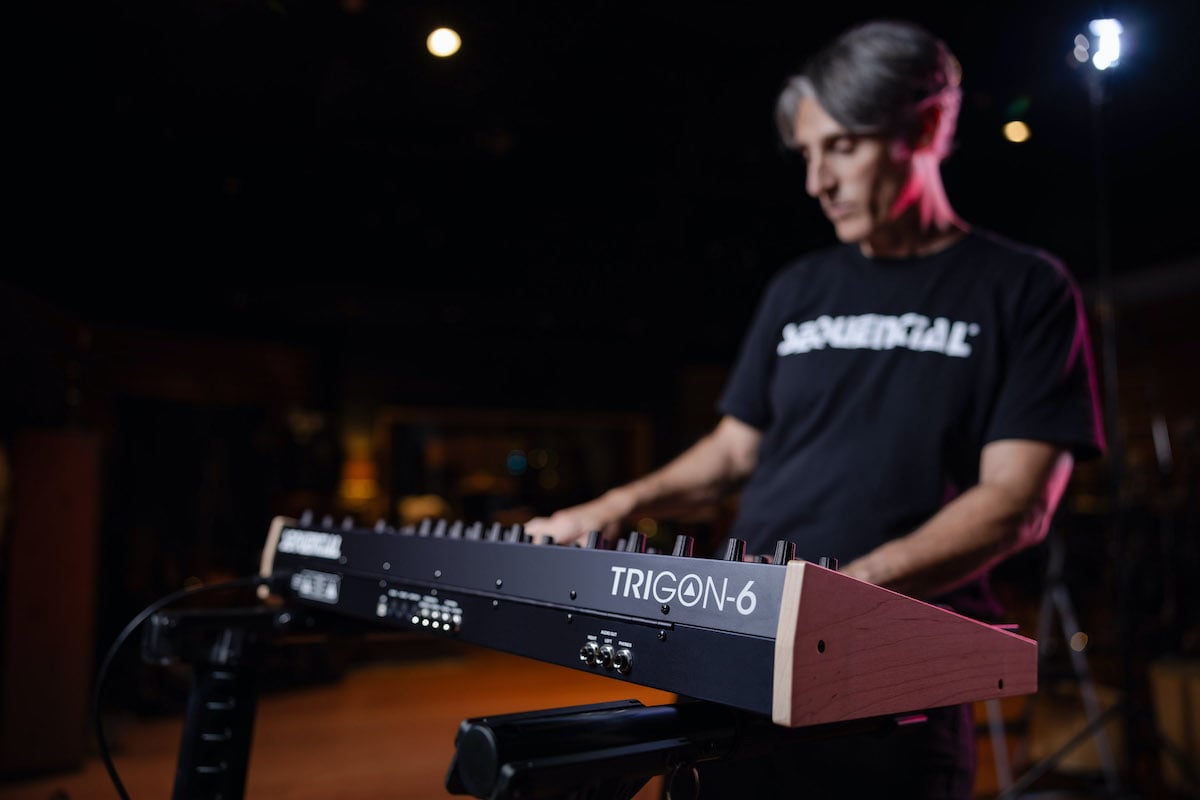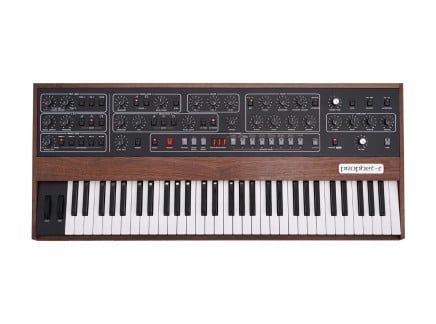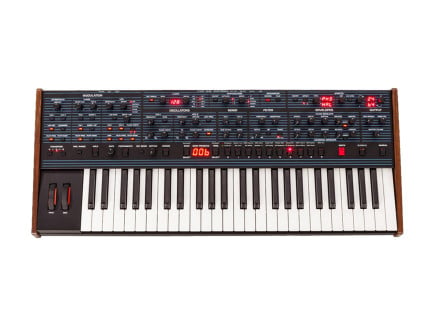Sequential's newest synthesizer, the Trigon-6, is an analog, six-voice polyphonic keyboard synthesizer much in the spirit of the Prophet-6 and OB-6—but it has a number of tricks up its sleeve, including some signal flow features never before found on a Sequential synth. With three oscillators and a ladder filter per voice, we think you'll find it's perfect for capturing some quite familiar vintage synthesizer tones that aren't quite covered by more Prophet and Oberheim-like instruments...so if you're looking for some real punch and power in a polyphonic synth, you're going to want to take a look at Trigon-6. Of course, it's also capable of much more...which we'll explore as we go on.
Notably, Trigon-6 is the last Sequential synthesizer on which Dave Smith contributed to the design; so we have to look at its release with a dose of respect and admiration. It (along with the Oberheim OB-X8) is likely the final instrument we'll see that had Dave's direct input, and based on that fact alone, we think it deserves careful consideration.
Of course, Trigon-6 would be an excellent instrument regardless; so, check out the video above—and once you have, let's take a closer look at what it contains, how it works, how it sounds, and how you might use it.
The Sequential -6 Family
For anyone familiar with Sequential's current product lineup, the Trigon-6 will no doubt spark an immediate thought: it looks a heck of a lot like a Prophet-6 or an OB-6. It features a nearly identical form factor, the same 49-key keybed, six-voice polyphony, and a strikingly similar internal signal flow. As of the time of release, they're also all the same price: $3499 USD.
This is all by design. Before the introduction of the Trigon-6, it was easy to look at the Prophet-6 and OB-6 as slight variations on the same synthesizer—with the P-6 featuring Sequential-designed oscillators and filters, while the OB-6 offered Oberheim-designed voices. However, the Trigon-6 changes our feelings about the relationship of these instruments: it seems less like these are different flavors of the same instrument, and instead are all members of a truly fleshed-out product line: a family of instruments for professional musicians who need fully-featured, portable, practical analog polyphonic synths with preset memory, extensive MIDI implementation, built-in effects, and more.
If you're a stage keyboardist and need an all-around, hits-all-the-marks synthesizer, odds are that one of these three will be perfect—just choose the sonic "flavor" that best suits you and your music. If you're running a studio that needs access to a variety of modern and vintage synth tones, you well may want all three.
So, before diving into details about the Trigon-6 specifically, what do these three synths have in common? All three feature a fairly similar signal flow: oscillators, noise, a mixer, a filter section, dedicated filter and amp ADSR envelopes, dual digital effect section, a global LFO, and polyphonic modulation options. They each offer a velocity and mono-aftertouch-capable 49-key Fatar keybed, and include an arpeggiator and easy-to-use sequencer. They all offer full MIDI implementation, preset memory, alternate tunings, and plenty more...truly, these instruments are meant to cover all the bases you could possibly need in stage performance or in the studio.
Obviously, the Prophet-6 is a direct descendant of the iconic Prophet-5—a true Sequential synthesizer through and through, providing all the lush pads, leads, and textures you could want. The OB-6 leans into the more raw, gritty Oberheim character—giving you a machine that excels at in-your-face basslines, edgy leads, bright brass tones, vintage-style strings, and much, much more. The newest member of the family borrows inspiration from designs from yet another iconic synth maker: though Sequential doesn't explicitly state it in their marketing materials, the three-oscillator-into-ladder-filter design is a clear callback to the Minimoog and other Moog instruments. So, if you're looking for a classic, iconic analog synth sound...Sequential has basically all of your bases covered. That said, let's now take a closer look at Trigon-6 to see everything it has to offer.
Sequential Trigon-6 In Depth
Since Trigon-6 has a ton of similarities to P-6 and OB-6, let's start by talking about what's different on the Trigon. The big points are obvious: instead of having two oscillators per voice, it has three—and it uses switchable 2/4-pole transistor ladder lowpass filters rather than the P-6's lowpass/highpass pair or the OB-6's SEM-style multi-mode filter. What does that mean? It means the Trigon-6 leans toward a somewhat more Moog-like sound, using a signal path quite similar to the Minimoog, Memorymoog, or many vintage Moog modular systems.
The oscillators (which all employ a discrete design) are each a slight bit different from one another. The first and second offer octave switch controls, selection of any combination of triangle, saw, and variable pulse shapes (with dedicated pulse width control on the panel), and an option for Osc 2 hard sync and detuning. The third oscillator is nearly identical, with three important differences: it can switch down to low frequency range, it can be decoupled from the keyboard, and it provides both rising and falling saw shapes in addition to triangle and variable pulse shapes. Those familiar with the Minimoog will recognize this combination of tricks: as we'll see later, the third oscillator can be put to work as a quite fully-featured modulation source.
The mixer section provides direct control for each of the oscillators' signal levels going into the filter, as well as controls for noise level and a double-duty mixer feedback/drive control for adding a variety of grit/distortion to your sound. Pretty rad.
The filter section uses, again, a switchable 2/4-pole ladder filter. This is the same ladder filter found in the Pro 3, designed for everything from singing resonances to earth-shaking thump and low end. The filter section offers controls for full, half, or no keyboard tracking, an ADSR envelope with continuous bipolar level control, and optional velocity response for the filter envelope. This is perfect for everything from bouncy plucks to wide-ranging sweeps and swells—and when this filter is hit hard by the three oscillators (and perhaps a touch of feedback or overdrive?), you won't believe your ears. Like the filter section, the Amplifier section includes a full dedicated ADSR envelope with optional velocity response.
The oscillators and filters are truly Trigon-6's sonic backbone. From there, the similarities to P-6/OB-6 become more prominent. Trigon-6 features the same (excellent) 48kHz/24-bit dual effect processor at the end of the signal chain, great for everything from chorus, ring modulation, flanger, and phaser all the way to multiple excellent delay and reverb effects. Delays can be synced to the master clock section, and true bypass on the effects means that you can easily access a fully analog, non-digitized version of the signal anytime you need. You also have access to global distortion and continuous pan spread control for truly huge, vast-sounding textures.
Like its siblings, Trigon offers Sequential's Vintage control—a means of continuously introducing instability into nearly all aspects of the instrument's response, from oscillator tuning to envelope responses. This affects each voice independently, so it's a great way to get everything from subtle chorusing/detuning to the all-out unstable sounds of a poorly-calibrated instrument. You can access gentle vintage tones this way, or you can evoke broken-down, rusty-yet-nostalgic synth sounds easily. When combined with the Unison mode, this is a particularly big deal. You have the choice to use any number of voices for Unison...meaning you can use up to all six voices for a huge, detuned, 18-oscillator/6-filter sound. Add some pan spread and turn the Vintage knob up and it's the hugest monosynth sound you've ever heard.
Trigon-6's modulation section might at first seem similar to Sequential's other synthesizers, but it's important to consider the implications of having three oscillators instead of two. Suddenly, the third oscillator can act as a polyphonic LFO, affecting any number of other parameters while the first two oscillators remain free to make sound. You could do layered pulse width modulation, heavily modulated sync tones, or filter-FM'd stacked harmonies that simply cannot be achieved with the OB-6 or Prophet-6. If you're looking at these three synths and wondering which one is right for you, this is an easy point to overlook: but it's a significant strong suit that can take the Trigon-6 into plenty of turf its siblings cannot approach. That said, let's take a closer look at some of the modulation controls.
Trigon-6 features a global LFO, with choices for triangle, saw, ramp, square, and random wave shapes. It can be used to control any combination of oscillator frequencies, oscillator pulse widths, filter cutoff frequency, and output amplitude. It can run free, or it can be tempo synced. Nice. The Polymod section—a Sequential concept since the Prophet-5—can be used for polyphonic modulation routing from oscillator 3 and/or the filter envelope. These can be used in any combination (with bipolar level controls for each), and can affect any combination of oscillator frequencies, filter cutoff frequency, oscillator 1 and 2's pulse widths, and the feedback control. Again, being able to use the third oscillator for these sorts of tasks while oscillator 1 and 2 are still performing audio duties is a huge deal...and since oscillator 3 can operate in either LFO or audio ranges and can be decoupled from the keyboard, you have all sorts of opportunities for FM, audio-rate PWM/filter/feedback modulation, and all manner of polyphonic LFO-ridden madness. I truly think this is one of the strongest features of this synth.
Aftertouch can be routed to any combination of oscillator frequencies, filter, amp, LFO amount, and either effect mix control simultaneously, making for a staggering number of expressive performance options. This combined with the aforementioned options for velocity response on each envelope makes this synth feel like a truly playable instrument. Of course, pitch and mod wheels are still on board, and the keyboard offers continuously variable glide. Again, Trigon-6 also features the same arpeggiator and polyphonic, up-to-64-step sequencer section found in other Sequential synths...allowing you to be as hands-free as you need.
Trigon-6's New Frontiers
So, all that considered, what are our thoughts? Though at first glance Trigon-6 might seem quite similar to its predecessors and siblings, and despite some definite commonalities, it really does have a lot of its own character and its own distinct sonic potential. Vintage synth tone enthusiasts now have a new take on a quite classic synth flavor, all in a time-tested, playable, and inspiring package. Given the amazing things we've seen musicians do with the Prophet-6 and OB-6, we're confident that Trigon-6 will carve an interesting place for itself in the world of modern music-making.
It'll make a great choice for any keyboardist looking for a quality analog synth that covers a lot of ground, especially those who need an instrument that will hold up to the rigors of touring/performing life. For studios looking for a fresh take on a Moog-like sound, it'll easily meet and exceed their needs.
But best of all, it truly does open up its own unique avenues of exploration: sounds with deep modulation, drifting Vintage detuned textures, bone-rattling unison bass sounds, whistling overtones, and just absolutely solid leads and chord tones. Sequential has already proven that the analog polyphonic synthesizer as a concept has plenty of room for instrument-by-instrument variation; and now, the Trigon-6 pushes new boundaries in this otherwise familiar paradigm.
Looking to learn more about Sequential's synth lineup? Check out our overview of Sequential synthesizers for an idea of how they all stack up.

